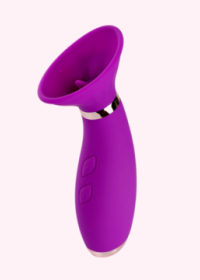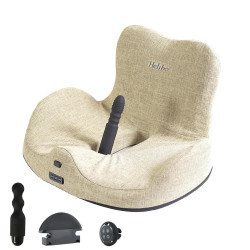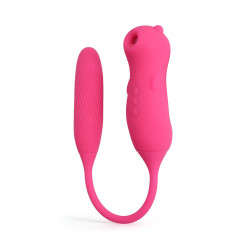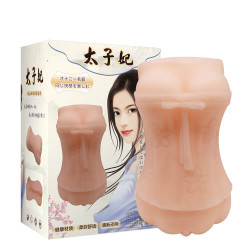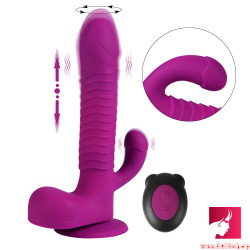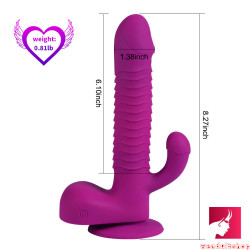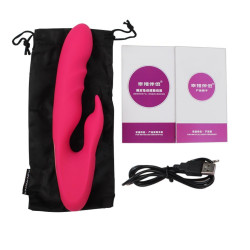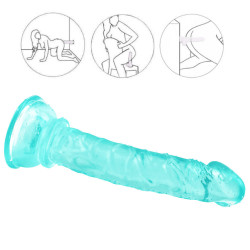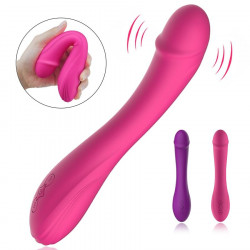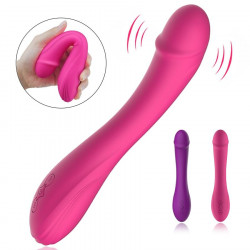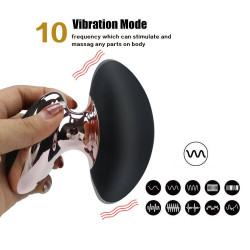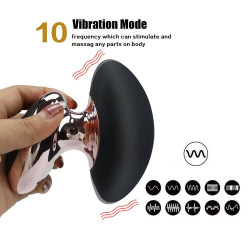
Bondage For Beginners Guide | The Pleasure Chest
You're not the only one who has dreamed about being a slave.
All kinds of people participate in the common practice of Bondage, which is the state or practice of being bound or constrained. A power dynamic that may be exciting to some can be reinforced by adding verbal or physical restrictions to a scene (a BDSM interaction with one or more individuals). Others are drawn to Bondage because it increases vulnerability.
Since one should ideally have complete faith in the other before being bound, this technique can also help to foster trust in a partnership. After participating in Bondage or any other BDSM activity, several partners have reported feeling closer to one another.
Seeing your partner writhe in pleasure with nothing stopping you from repeatedly hurting them or causing them to orgasm can be exciting for those who want to be the rigger—the one who ties their partner up, also known as the top in a bondage scenario. It might be thrilling to be helpless and subject to your partner's wishes if you choose to be a rope bottom or rope bunny (the one being restrained).
People are drawn to Bondage for various reasons, many of which are not sexual. The following are a few of these reasons:
meditating
- The Pacification
- Art
- In a trance
- For amusement
- Feeling
- Have faith
- Closeness
During a bondage scene, many people find solace in being made to remain passive. During this time, one may experience a meditative or trance-like condition. This mood is frequently actively sought after in shibari, or Japanese-style Bondage. Being stuck in one place for a while might teach you much about letting go. In my experience, wearing rope as a body harness can be calming.
Bondage for Beginners: Methods of Bondage
A person can be bound in a few distinct ways:
- Securing body parts together, such as your hands, legs, hogtie (securing your hands and feet behind your back), etc.
- Separating bodily parts, such as the arms or legs.
- Being fastened to anything, such as a chair or bed.
- Suspending the receiver from the ceiling is often known as suspension bondage. (An illustration of suspended Bondage can be seen on the cover of Midori's The Seductive Art of Japanese Bondage.)
- Slowing down or impeding mobility, like when wearing a hobble skirt.
- The binding is used for ornamentation to turn the bottom into art. A body or chest harness can also be used for this.
- "Mummification" is a form of advanced Bondage in which the person being tied is immobile. Usually, plastic wrap or other soft elastic material is used for this, but bondage tape is another option.
- For a purpose, bondage. Not just for being bound but for a specific reason the recipient is bound. For example, if someone's legs are forced open, it would be simple for their rigger to "assault" them with a vibrator (with their consent, of course). Alternatively, the goal might be the opposite—many people participate in chastity bondage.
Bondage for Beginners: Types of Bondage
Bondage serves a wide range of objectives, and there are several kinds. Among these forms of Bondage are:
Shibari: Originating in feudal Japan, Shibari is one of the oldest forms of Bondage. Over time, it evolved from a means of restraint to the erotic Bondage that is now known as Shibari or Kinbaku. Shibari is a fantastic resource for learning a range of abilities. (Miumi-U Teaches Japanese.)
Decorative Bondage: A person is bound for aesthetic reasons. This can be accomplished in various ways, and movement restriction is not one of them. Many harnesses are made to be ornamental. One might wear one for a sex party, an erotic picture session, fashion, etc. Some people make lingerie out of decorative Bondage. Although one may buy body harnesses made of chains, leather, and other materials, rope can accomplish decorative Bondage. Shibari may be seen as a form of ornamental Bondage.
Film Bondage: Bondage used in a movie scene. Only for aesthetic reasons. Due to the recipient's light binding, escape is quite simple. Since the person "bound" is performing a part, no force is involved in this kind of Bondage. (An excellent illustration of this is Fifty Shades of Grey.)
Predicament Bondage: When restrained, someone can alternate between two uncomfortable positions. For a while, that person cannot switch between the two roles.
Torture Bondage: The restrained individual is placed in a painful or uncomfortable position. Bondage of this kind might last for a long time. If a person is purposefully placed in a position that causes them discomfort, the majority of bondage practices can be classified as torture bondage.
Self-Bondage: Self-bondage is what one does. It can be challenging! I advise against trying anything alone or without a backup plan, especially if you're starting.
Meditative Bondage: utilizing Bondage as a method of meditation.
Soft Bondage: The other person can be held down by hand, have their hands clasped behind their back or above their head, or have a scarf tied to their headboard. This kind of Bondage frequently occurs spontaneously. This can happen when someone is warming up to something more intense or experimenting with Bondage. Or perhaps you're feeling inventive, but there aren't any bondage tools available.
(Soft Bondage includes using a scarf or nylons as a blindfold.)
Verbal Bondage: A mild bondage of sorts. One individual is either told not to move or their movements are restricted.
Bondage for Beginners: Tools For Binding
You can find a variety of gadgets to satisfy your most extreme desires about Bondage. Feel free to investigate Bondage independently; however, I've compiled a list for beginners below! There are countless options.
Rope
Bondage rope's versatility makes it fantastic. It's convenient to store and may be used for almost every kind of Bondage. I have three 30-foot bundles of rope in my underwear drawer that I can use for anything. Bondage rope is available in different lengths and materials. Among the several kinds available for purchase are silk, hemp, nylon, and soft cotton rope.
The strength of the knots you lay down will depend on the type of rope. Compared to hemp or cotton, silk ropes are more slippery. The material may irritate people who desire a strong and secure knot, but it might be better for someone who is just beginning out and doesn't want to be bound too firmly.
The Kink Bind & Tie Initiation Kit 5-Piece Hemp Rope is an excellent starter bondage kit if you're just getting started. It includes two 30-foot and 50-foot rope bunches, a pair of safety scissors (which are crucial!), and a drawstring bag to store everything. If comfort concerns you, this hemp rope is softer than regular hemp rope.
Cuffs
There are several varieties of handcuffs available. Although handcuffs are standard, other cuffs that bind different body parts together in various positions (such as a hogtie, one of my favorites) and ankle cuffs are also available. Metal, leather, silicone, and other materials can make cuffs. They can bind someone, fasten them to a piece of furniture, or even another partner.
Spreader Bars
A pole that can be extended and has cuffs on both ends to stretch someone out. Although there are many varieties of spreader bars, some of the more popular ones are arm and leg spreader bars. There are wrist and ankle cuffs included with this Sportssheets spreader bar.
Collars
Collars can reinforce roles of dominance and submissiveness. Any play involving mental Bondage can greatly benefit from their inclusion. Various materials, including leather and vegan leather, make collars. Because it is leash-compatible and stylish enough to wear both within and outside of a BDSM scene, I adore the Vondage Thin O Ring Collar.
Bondage Tape
The purpose of bondage tape is to only adhere to itself. This indicates that applying it and taking it off are both relatively straightforward. For people who take pleasure in suffering, this is less of a problem, but for the rest of us, it is still a significant difference. Even people with a higher pain threshold, I'm sure, would concur that being taped up for a while and then having that tape torn off of you may be a buzzkill and cause bleeding or harm.
Binders
It's hardcore yet similar to cuffs. Leg and arm restraints tie both of your limbs entirely together. There isn't much flexibility, so your sub is helpless.
Blindfolds
An excellent method to intensify a situation, including Bondage. A blindfold blocks a sub's eyesight, making them unable to see what you will do to them next. Sensitivity to sensation play may grow if one of the senses is removed. This Patent Leather Fleece Blindfold is adorable and comfortable!
BDSM Furniture
The purpose of these pieces of furniture is to set someone up. A stockade, which can take many different forms, is one example. It usually restricts your arms and head, making it impossible to look behind you.
A sub is forced to be secured with their limbs spread wide by crosses, which are X-shaped pieces of furniture. The purpose of bondage benches and horses is to hold a person in a variety of positions. The purpose of bondage chairs is to have a person seated. Almost any bondage urge can be satisfied by a piece of furniture. But they're usually not inexpensive. Bondage furniture buyers typically have a dedicated area for BDSM activities.
With an item like the Lux Fetish 6-item Inflatable BDSM Sex Sofa Set, one can overcome a space constraint. It comes with a set of wrist and ankle cuffs that may be attached to the curved inflatable sex sofa. An air pump is also included for convenient inflation! A blindfold, too!
Restraint Sets
A restraint set is a simple and efficient substitute if, like me, you lack the funds or the space for BDSM furniture. Everyday furniture items can be transformed into kinky props for restraint scenes. With your arms and legs extended to each corner of your bed, under-the-bed restraint sets emerge from beneath your mattress and secure you to it.
Gags
A gag is a speech-restricting restraint tool. Usually, something enters the mouth and keeps the jaws open. Occasionally, a sub's mouth is left open by an open gag or an O-ring. In other cases, it's a ball gag or similar device packed into a person's mouth to prevent anything from getting inside. The detachable silicone ball makes it easy to clean, making this silicone breathable gag an excellent option for novices! Since silicone is a nonporous substance, disinfecting it is a breeze.
Bondage for Beginners: Safety
Bondage is all fun and games until you are trying desperately to free your sub while they are wrapped in sixty feet of rope, exhausted and nervous. Clear guidelines and communication can help prevent many bondage and BDSM mistakes. Before participating in a bondage scene, pay attention to the dos and don'ts:
Consent is key. Consent and sex are closely related. No sex may be had without consent. Everyone should be excited to participate or, at the very least, open to trying something new. Coercing someone into engaging in any sexual behavior is never acceptable.
Communication is also crucial. It would help if you communicate openly and clearly at all times when playing Bondage or any other BDSM action with a partner. In other words, before, during, and following a scene. Any health concerns must be discussed before a scenario!
Let's say you or your partner in Bondage have a medical condition like arthritis, asthma, or any other condition that could make some Bondage risky. If so, you should be especially cautious when performing a scene. This is not to imply that bondage practices are incompatible with those who have health issues or impairments! It simply means that everyone needs to be very aware of their bodies and may need to modify specific postures and knots for comfort and safety.
Any emotional trauma during a scene must also be considered (for both the top and bottom). Even if your spouse doesn't use the safe word, you should always check in with them if they appear to be triggered. If neither of you wants to, you don't have to stop everything.
You don't have to be atypical! However, it's critical to have faith that your partner's and your mental health are being looked after.
Establish a safe word. Everything has to stop once your spouse says the safe word. You must attend to their needs right away. If your scene involves roleplay, it's advisable to avoid using the word "stop" as your safe word because it might get confused.
Never leave a bound person alone. If something goes wrong, your bound sub won't be able to aid themself. Therefore, they are powerless. Make sure you always have easy access to them to prevent this.
Do not tie anything around someone's neck. Only a collar or something specifically made to do so should fit around your neck, particularly if you're starting. Some Shibari masters can tie beautiful knots and ties around the neck of their bottoms. I wouldn't try it, though, since you are most likely not a Shibari master.
Make sure your sub can be released from its confines quickly in an emergency. For rope bondage, that entails having a pair of safety scissors available. If there is a lock, make sure you always have the key on hand. Wearing it around your wrist on a string is a convenient trick. In an emergency, attempt to keep an extra key hidden away in a secure location.
Take it slow! Avoid taking on more than you can handle. Check-in with your spouse between steps to make sure they are okay. Verify that the restraints are not too tight or loose. One or two fingers should be able to pass under your knots.
Stretch!! Stretching helps avoid circulation problems from being in one position for an extended period, and flexibility is fantastic for Bondage.
Pay attention to your body! This applies to the bottom as well as the rigger. The bottom should immediately alert the top if they experience any pain or severe discomfort. After that, the top should promptly release their partner. Keep an eye out for nerve bundles and areas like the neck and joints vulnerable to nerve damage (I would do a lot of reading on this!). Place the ties above the joints while binding wrists and ankles. To prevent hurting your back when tying tops, make sure you are not bending over your partner. Unless your spouse is standing, I would advise sitting next to them on the bed or floor and tying them up.
Ensure you're considering your partner's emotional and mental well-being. A bottom (sub) frequently enters subspace during a scene, a transcendental state that happens during BDSM play. It's crucial to take care of your subs after a scene because this place can leave someone feeling very vulnerable; for some, cuddling and snacks are effective. Others might benefit from kisses, rubs, and possibly further intercourse. Prior to taking part in a scene, you must be aware of your sub's needs. Subs aren't the only ones that require more affection. Remember to pay attention to your own needs, Doms. It can be very exhausting to be the top (dom) of a scene. After a session, take advantage of the opportunity to comfort and pamper one another.
Bondage for Beginners: Resources
This is just a tiny portion of what the bondage industry has to offer. Anyone interested in BDSM should do their research because there are so many different types of bondage instruments and scenes.
Bondage Basics by Lord Morpheous, Shibari You Can Use by Lee Harrington, and The Ultimate Guide to Bondage by Mistress Couple are a few excellent books I've read on the topic. This article provides a solid starting point for anyone interested in Bondage!

